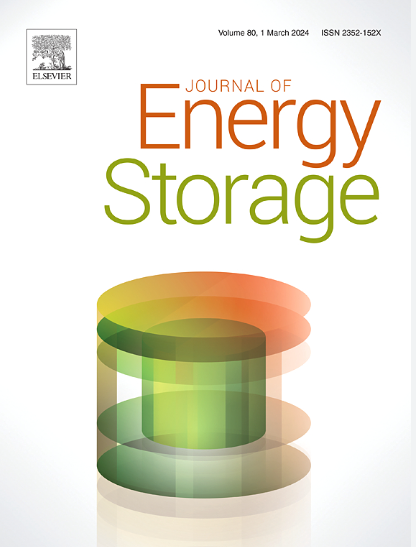Centralized strategy learning with multi-feature scale health factors for lithium-ion battery RUL prediction
IF 8.9
2区 工程技术
Q1 ENERGY & FUELS
引用次数: 0
Abstract
The prediction accuracy of the remaining useful life (RUL) of lithium-ion batteries is an important condition to ensure the safe and effective driving of electric vehicles. In the feature factor selection stage, the existing methods mostly use a single health factor, or introduce the method of sample entropy to fuse the features of multiple health factors. This paper proposes a lithium-ion battery RUL prediction based on multi-feature scale health factors and a centralized strategy learning method. It aims to reduce the time complexity of data preprocessing and consider the interaction between data. Firstly, to ensure the richness of the data sequences and its interaction effects, multi-feature scale health factors are extracted from the battery dataset. Secondly, the proposed multi-feature scale star aggregation and redistribution model is adopted. Multiple correlation coefficients were used to analyze the correlation of the extracted data sequences, and then self-adaptive selection was performed. A centralized strategy learning approach was employed to capture inter-sequence dependencies, followed by feature aggregation and redistribution for prediction. Finally, the proposed method was rigorously evaluated on three distinct datasets: the NASA benchmark dataset, the Oxford battery degradation dataset, and our proprietary experimental dataset. Experimental validation demonstrates that the proposed prediction method achieves superior performance, maintaining consistently high coefficients of determination for RUL estimation across all datasets. Compared with other prediction methods, the proposed approach maintains errors below 1.7 %, demonstrating superior accuracy and enhanced generalization capability.
基于多特征尺度健康因子的锂离子电池RUL预测集中策略学习
锂离子电池剩余使用寿命(RUL)的预测精度是保证电动汽车安全有效行驶的重要条件。在特征因子选择阶段,现有方法多采用单一健康因子,或引入样本熵的方法融合多个健康因子的特征。提出了一种基于多特征尺度健康因子和集中策略学习的锂离子电池RUL预测方法。它旨在降低数据预处理的时间复杂度,并考虑数据之间的交互。首先,为保证数据序列的丰富性及其交互效果,从电池数据集中提取多特征尺度健康因子;其次,采用提出的多特征尺度恒星聚集与再分布模型;利用多个相关系数对提取的数据序列进行相关性分析,然后进行自适应选择。采用集中策略学习方法捕获序列间依赖关系,然后进行特征聚合和再分布进行预测。最后,在三个不同的数据集上对所提出的方法进行了严格的评估:NASA基准数据集、牛津电池退化数据集和我们的专有实验数据集。实验验证表明,所提出的预测方法取得了优异的性能,在所有数据集上都保持了一致的高确定系数。与其他预测方法相比,该方法误差保持在1.7%以内,具有较好的精度和较强的泛化能力。
本文章由计算机程序翻译,如有差异,请以英文原文为准。
求助全文
约1分钟内获得全文
求助全文
来源期刊

Journal of energy storage
Energy-Renewable Energy, Sustainability and the Environment
CiteScore
11.80
自引率
24.50%
发文量
2262
审稿时长
69 days
期刊介绍:
Journal of energy storage focusses on all aspects of energy storage, in particular systems integration, electric grid integration, modelling and analysis, novel energy storage technologies, sizing and management strategies, business models for operation of storage systems and energy storage developments worldwide.
 求助内容:
求助内容: 应助结果提醒方式:
应助结果提醒方式:


